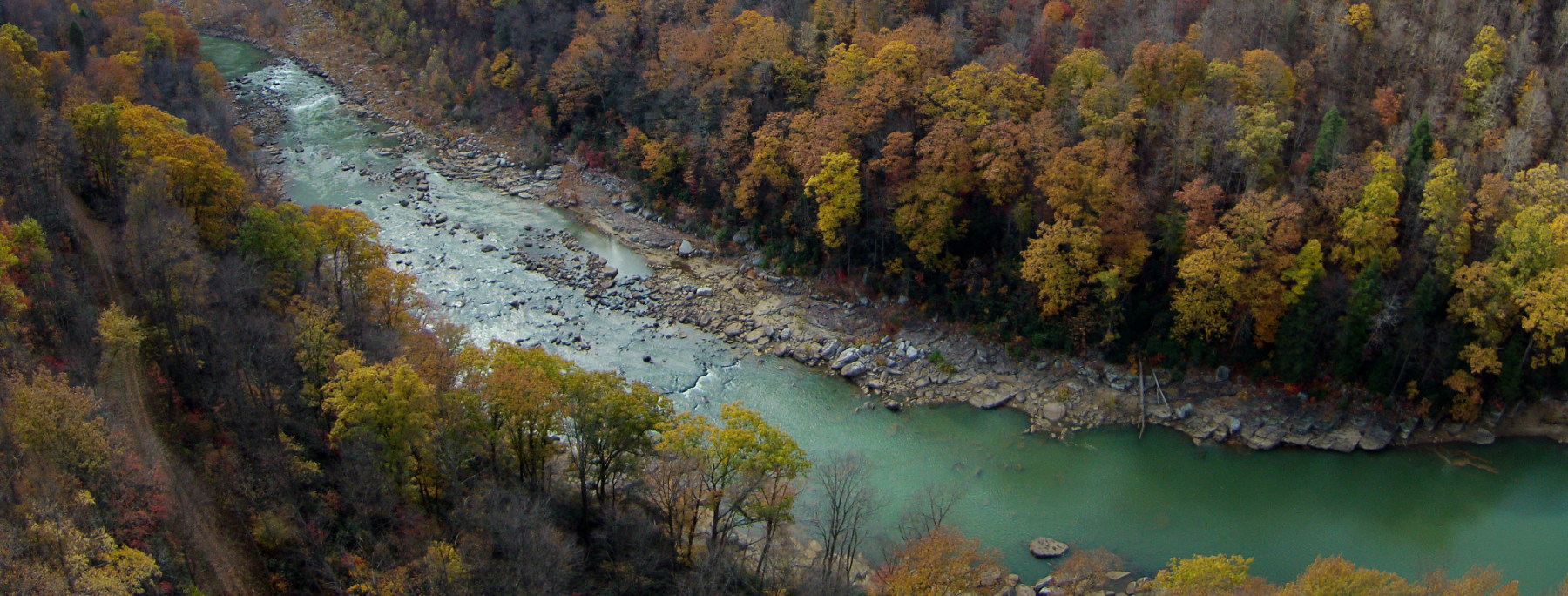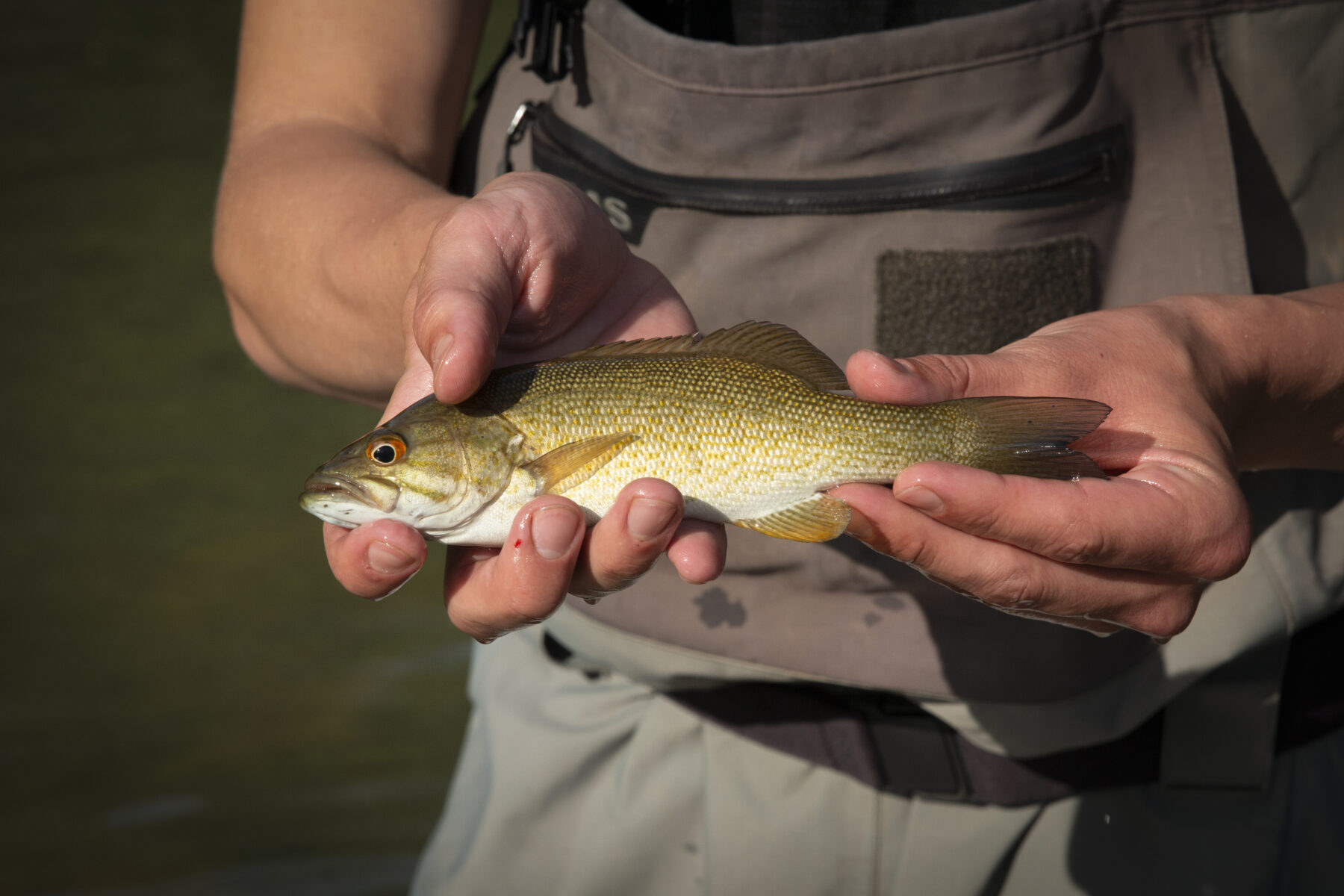
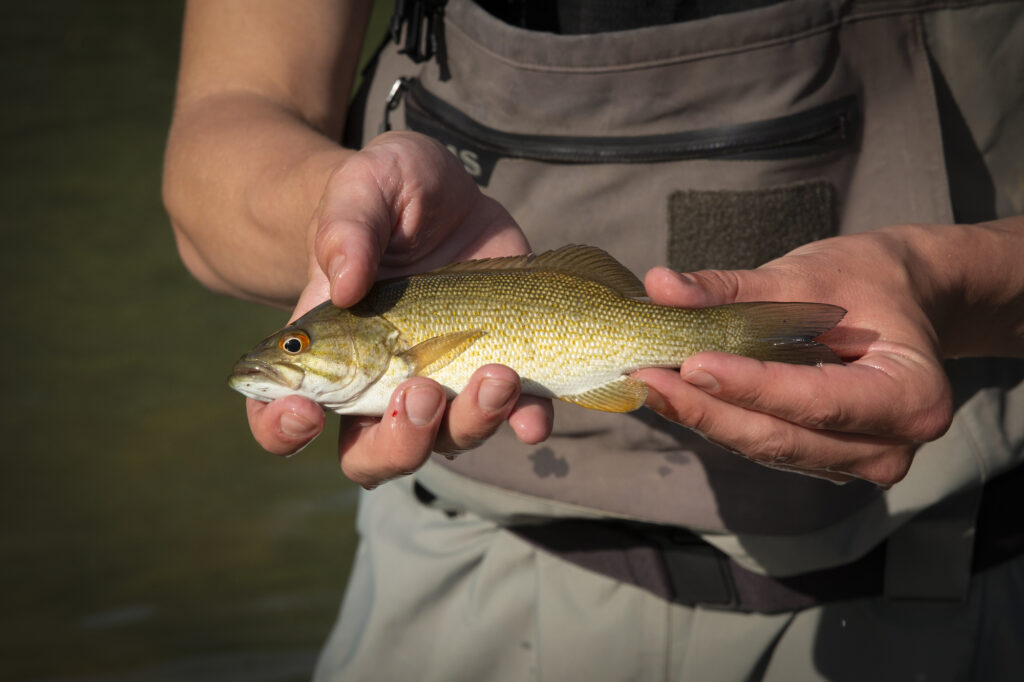
In June, I joined two Friends of the Cheat staff members to cast lines into the Cheat River at the mouth of Muddy Creek, hoping to catch a bass, trout, walleye, or maybe even a musky. Truth be told, I think we were hoping to catch any sort of fish since Muddy Creek and the section of the Cheat River below its confluence, known as Cheat Canyon, had been considered “dead” for most of the last 25 years.
Knowing that tens of millions of dollars were spent during that last quarter century to recover water quality in the Cheat River and its tributaries, however, was a promising aspect of our pursuit—we were literally “testing the waters” to see if fish had returned.
Within the last two years, all indicators suggested that fish were indeed returning into Cheat Canyon and beyond. People sharing photos on social media showed fish caught above and below the Muddy Creek confluence. A photo of a musky as long as a Labrador retriever, caught above Muddy Creek, in Albright, sparked dozens of shares and hundreds of “likes” on social media. I still do a double take when I look at that photo—it’s hard to believe.
It’s hard to believe because the Lower Cheat River was known to be polluted for decades. In 1994, the river grabbed national attention after a series of “blowouts” from a coal mine on Muddy Creek poured millions of gallons of acidic water into Cheat Canyon. The water quality became so bad that in 1995 the Cheat River was listed by American Rivers, a river advocacy group, as one of the top 10 most endangered rivers in the United States.
When I first experienced the Cheat Canyon in a raft in the early 1990s, the shorelines were indeed stained fluorescent orange and electric white from pollution, known as acid mine drainage. When I mentioned trying to catch a fish in Cheat Canyon while sitting around a campfire one evening long ago, a wise-cracking river guide handed me a bottle of whiskey and said, “You’ve got about as good of a chance catching a fish in a swill of flavored ethanol as you do in the Canyon.”
My heart sank.
Despite the “whiskey incident,” however, I lugged a fishing pole into Cheat Canyon many times through the years. I wanted to believe that rivers are resilient. I wanted to hold on to a hope that the majesty of the Cheat River wouldn’t always be matched by its tragic condition. I wanted to believe that if I could just catch one fish, maybe things were getting better.
I didn’t catch a single fish anywhere in Cheat Canyon for nearly a decade —at least not anywhere within a few miles of Muddy Creek, that is.
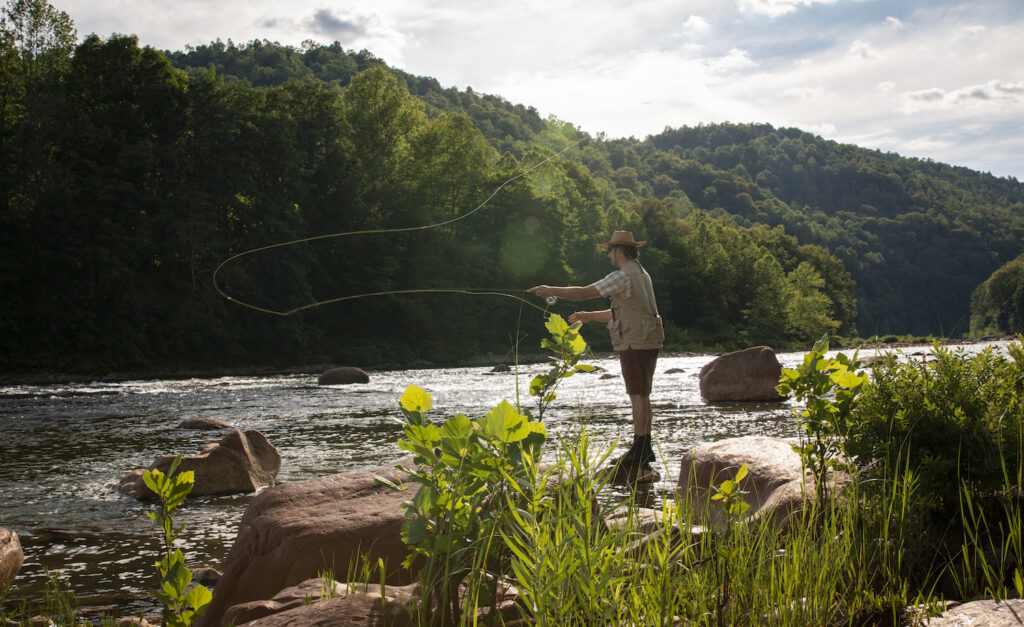
Wading into the water at the mouth of Muddy Creek on a summer afternoon in 2020 with an expectation of catching a fish made me antsy. In fact, I didn’t even grab my fishing pole. I took my camera instead and let Garrett Richardson (Monitoring Technician) and Owen Mulkeen (Associate Director) do the casting. I just wanted to see it happen. These two guys, along with a long list of other FOC staff and partners past and present—made this recovery happen. This was their moment. Not many people can say that in their lifetime they helped bring a dead river back to life.
As those two tied lures to their lines and set out to prove what was once impossible, I admired the view looking downstream into Cheat Canyon. Fifteen years prior, I stood in nearly the exact spot surrounded by life-choking sediments and telltale stains of heavy metals caused by acid mine drainage. The pH, or acidity, of water flowing from Muddy Creek into Cheat River back then was, at times, similar to lemon juice or acid rain. The water flowing from Muddy Creek into the Cheat River today, as a result of a nearly $10 million treatment system built by the West Virginia Department of Environmental Protection, is close enough to “normal” that fish and other aquatic organisms should be able to thrive.
Then it happened.
I heard a splash behind me. Garrett signaled an excited “fish on” sort of smile while standing in the outflow of Muddy Creek into Cheat River. His line was taught, and his fishing pole went into a bend. As he reeled, a feisty fish slapped its tail on the surface. In that instant, I felt as if we turned the page into a new chapter about the Cheat River.
As Garrett released a soda can-sized smallmouth bass back into the river and my mind did a rewind on 25 years of what was and what now is, I recalled words and wishes of characters along the way. In the mid-2000s, in interviews with Dave Bassage and Keith Pitzer, both former FOC Executive Directors, they each described a future in which trout thrived in Muddy Creek and that the Cheat River would recover as an intact ecosystem.
“It may well be that I never get to see trout in Muddy Creek in my lifetime,” Bassage said, “but we’re already seeing bass in Cheat Canyon. So, you take your successes where you can find them,” he said.
Another splish and splash from the corner of my eye and serendipity struck! Garrett was reeling in rainbow trout at the mouth of Muddy Creek.
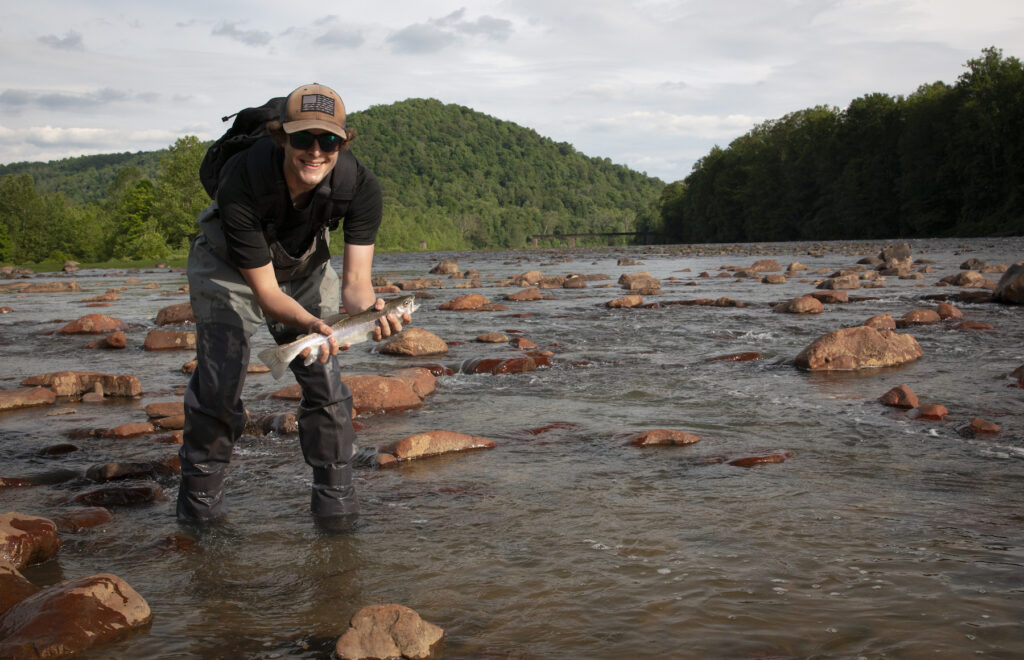
“We’ll take our successes where we can find them,” I thought to myself.
As the fishing hour was upon us, Owen landed a couple bass on a fly rod and Garrett moved further up into Muddy Creek and showcased a healthy smallmouth bass. In the weeks after our trip, Garrett caught another bass more than a quarter mile upstream in Muddy Creek.
So, what’s next?
First, I hope that bottles of whiskey will be used to celebrate good days of fishing instead of being used to describe water quality in the Cheat River.
On a more serious note, FOC needs your continued support. What does “support” mean? It means making financial contributions to the organization and volunteering to help its restoration, recreation, and community development programs succeed into the future. In many ways, this is just the beginning.
What is evident to me is that the recovery of the Cheat River is no longer just a tale about fixing pollution caused in the past, it is a story about the future and not just what will become of the river, but about what the river will become for its communities.

